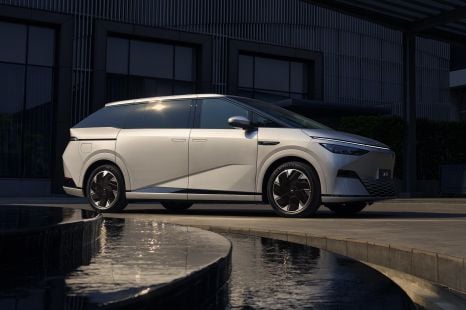

William Stopford
Will 2026 be the year of the people mover in Australia? China seems to think so
5 Hours Ago
The Hyundai Tucson and Kia Sportage are both closely linked under the skin, but they've been designed to look and feel different. How does that play out in the real world?

Contributor
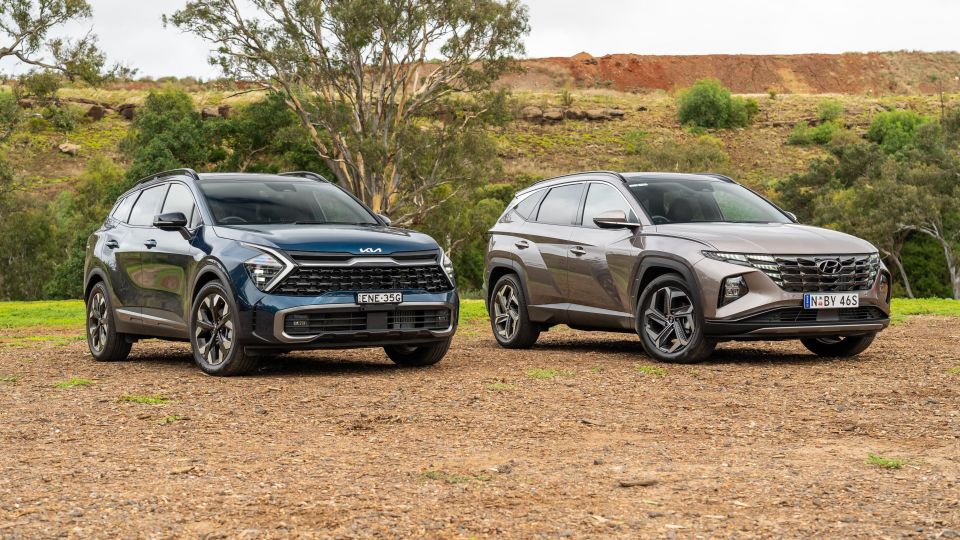

Contributor
Who doesn’t love a good sibling rivalry? The new Hyundai Tucson and Kia Sportage share their engines and chassis’, and they’re both from South Korea, but they’re not exactly friends.
These two cars are prime examples of the direction most carmaking groups and manufacturing alliances are heading. Save for some suspension tweaks they’re mechanically identical, but they’ve been designed to look different enough inside and out that most punters won’t notice.
It’s not badge engineering – the days of the Holden Apollo are mostly gone – but the ties between cars like the Tucson and Sportage are already close, and they’re only getting closer.
How does that play out in the real world? That’s what we’re here to find out.
The Tucson and Sportage go head-to-head in one of Australia’s most competitive segments, and represent huge steps forward from their predecessors. Bigger, more efficient, more luxurious, and more expensive, they both launched with considerable weight on their sharply-stamped shoulders.
On test here are almost perfectly matched on paper, with diesel engines and generous standard equipment lists. They’re similarly hard to split in the real world, as you might imagine.
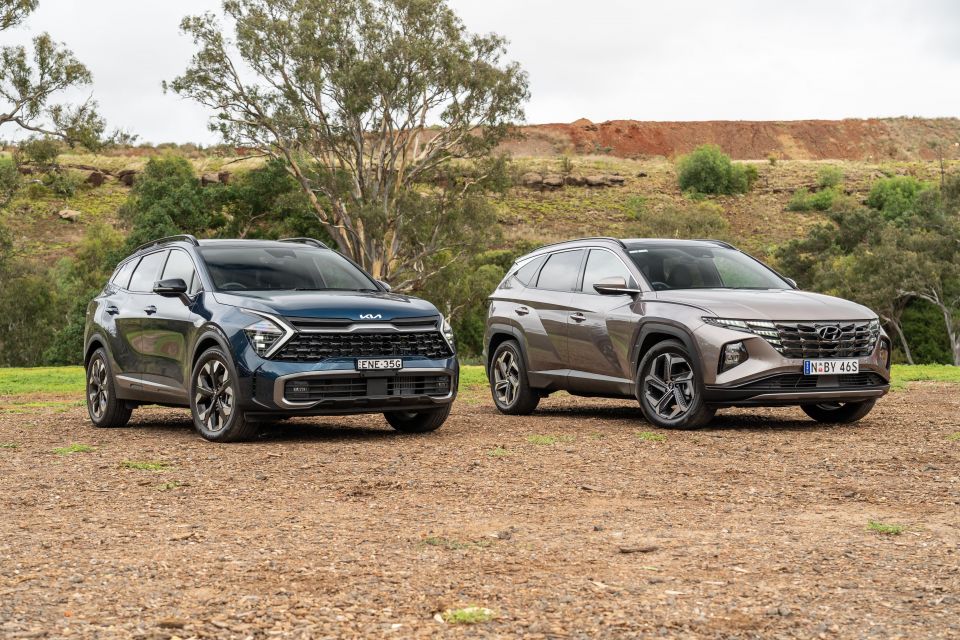
The Hyundai is the more expensive car on test, with a list price of $52,000 before on-road costs equating to around $57,200 drive-away using a Melbourne postcode.
You can pay $1000 more for the N Line package, which brings with it 19-inch alloy wheels, sports seats, metal pedals, and unique suede and leather interior trim, but it wasn’t fitted to our tester.
The Kia has a list price of $52,370 before on-roads, but is currently being offered at $54,990 drive-away. It’s the most expensive model in the range, sitting $3000 above the equivalent car with a 1.6-litre turbocharged petrol engine.
Although the national drive-away price fluctuates, the Sportage is likely to remain marginally cheaper than the Tucson once on-road costs are included.
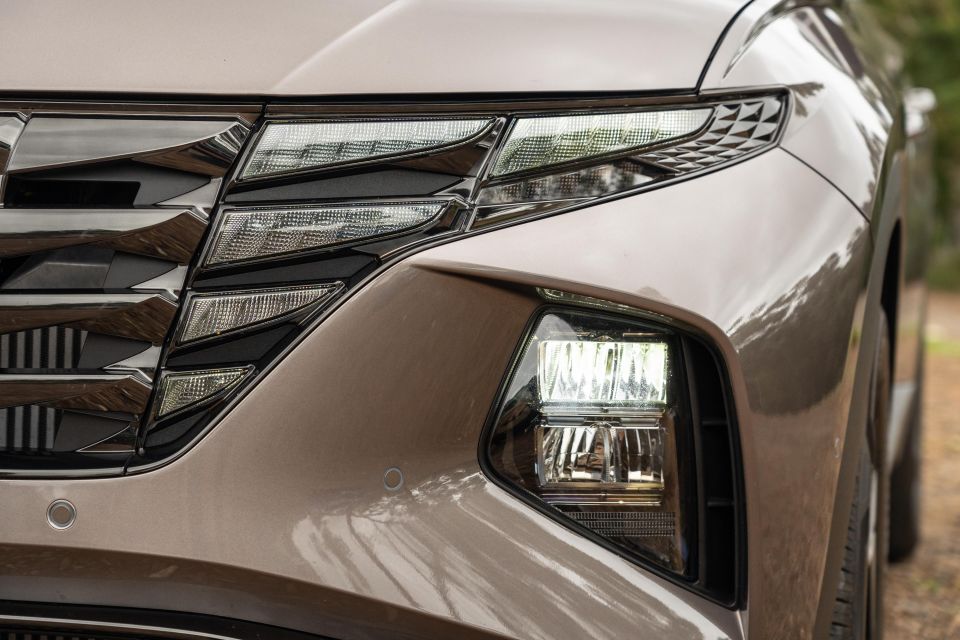



Both these cars come fully loaded; only the Hyundai can be made more expensive with options.
Standard equipment in both cars includes:
Only the Hyundai has a heated steering wheel and rear seats, but the Kia counters with larger screens (12.3-inch compared to 10.25-inch), metal pedals as standard, and suede uppers on the leather-trimmed seats.
Hyundai gives you a choice between black, brown, or grey interior trims, while Kia offers any colour as long as it’s black.
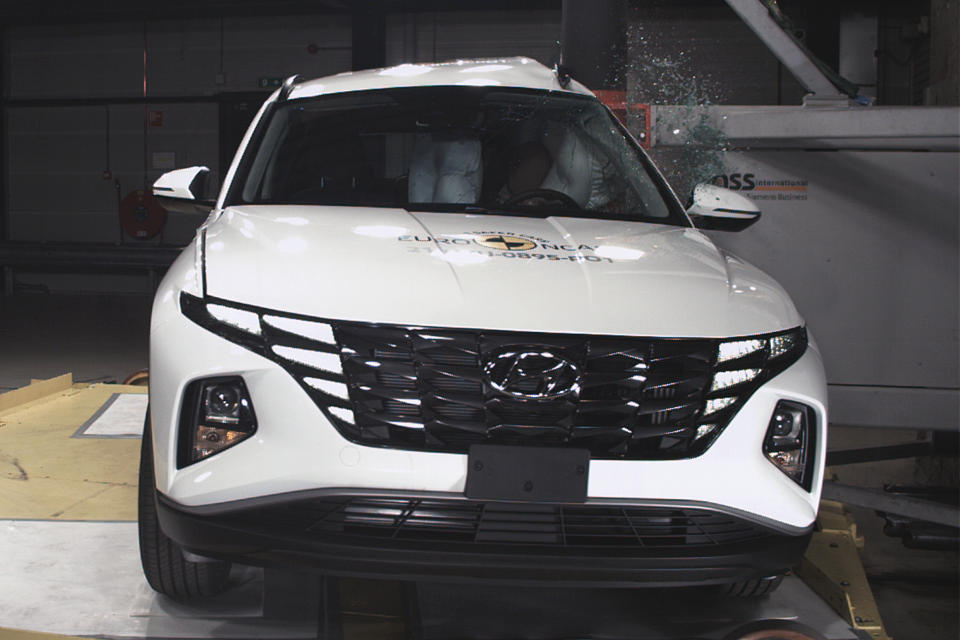
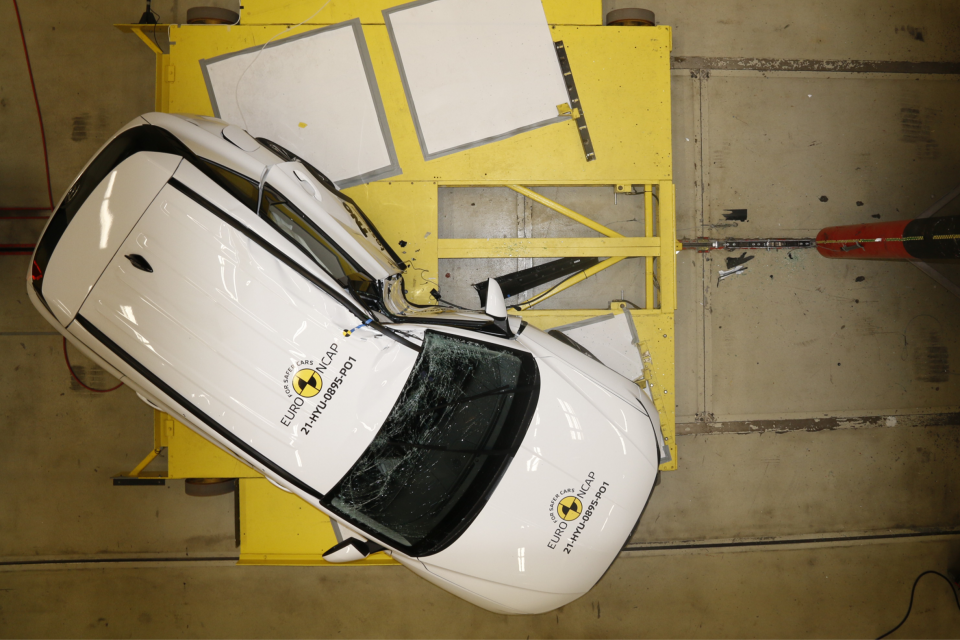
The Hyundai Tucson has a five-star ANCAP safety rating, but the mechanically linked Kia Sportage hasn’t yet been tested.
The Hyundai received an adult occupant protection rating of 86 per cent, a child occupant protection rating of 87 per cent, a vulnerable road user protection rating of 66 per cent, and a safety assist rating of 70 per cent.
Standard safety equipment in both cars includes:
Given they’re range-topping models, both these cars also feature a blind-spot view monitor, which displays a camera feed of your blind-spot to the instrument binnacle, and reverse parking collision avoidance.
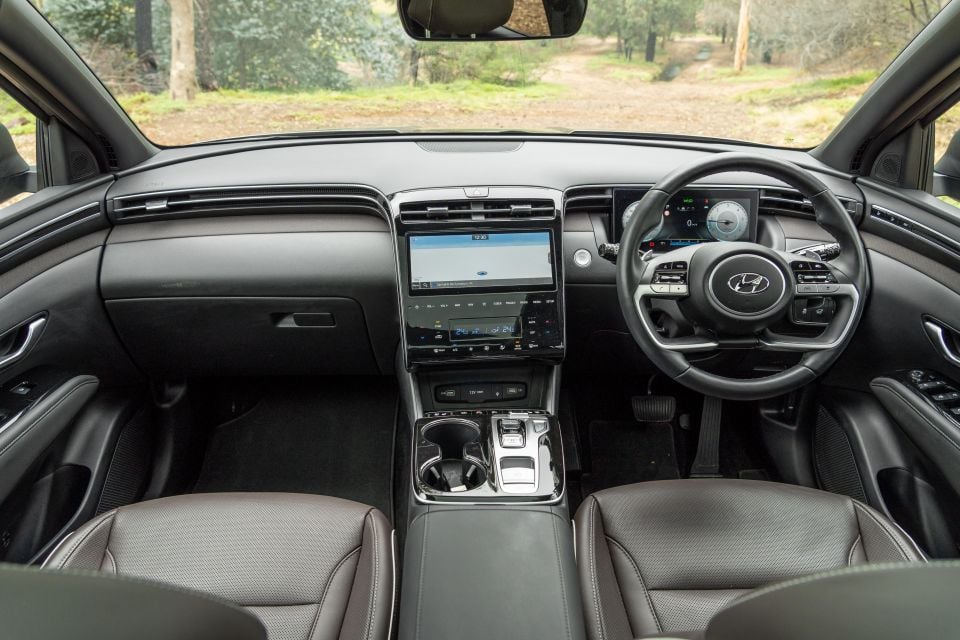
Hyundai Tucson
Where some of Hyundai’s latest cars are all about sharp lines and angles, the Tucson features plenty of round edges and smooth shapes. It’s an attractive interior, and one that looks thoroughly modern.
The driver sits in a generously-padded, electrically-adjusted seat with heating and cooling, and they grasp a handsome steering wheel trimmed in what feels like quality leather. It’s a little thing, but the Hyundai has a nicer wheel than the Kia.
The Tucson has a great driving position, whether you’re tall or short. Everything falls within easy reach, and the view over that long bonnet is commanding like you’d expect of a mid-sized SUV.
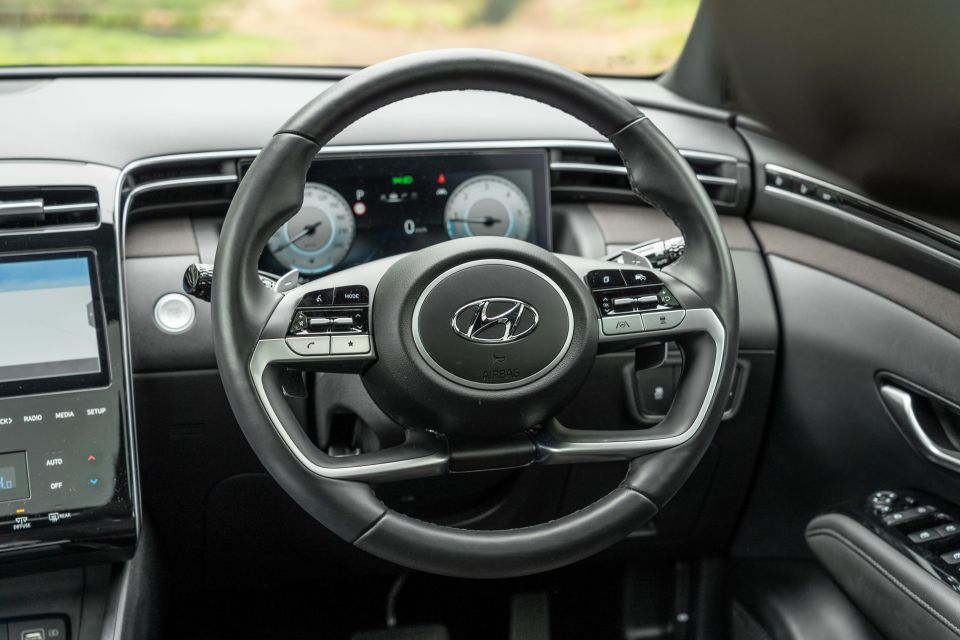
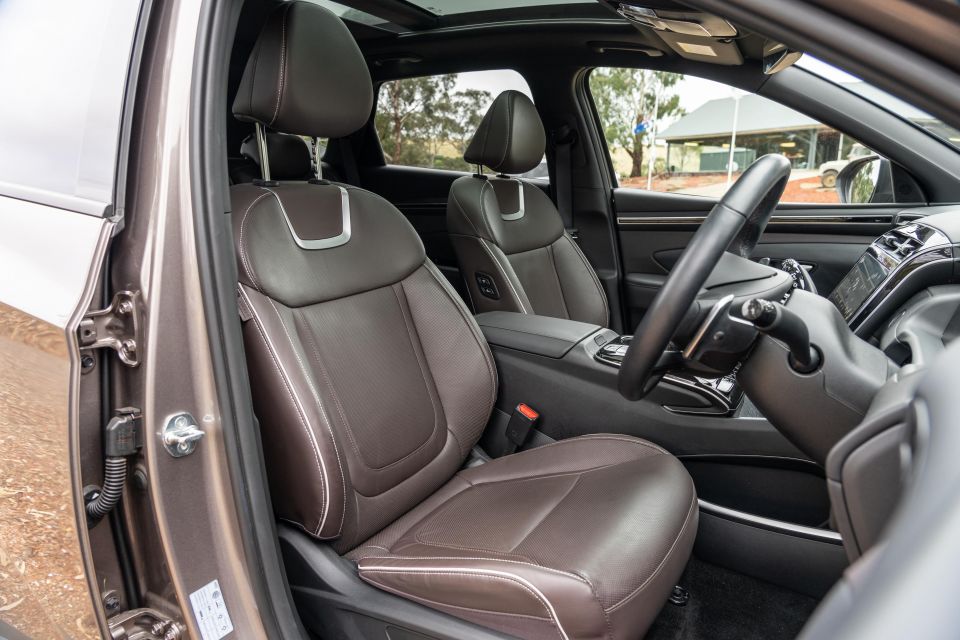
All-round vision is good, although the sloping rear pillars mean the blind-spot view camera and alerts come in handy on the highway.
Both the Hyundai and Kia have very similar technology suites. Both use the same infotainment system, and both have variations of the same digital dash cluster, but the Hyundai has smaller screens and a different dashboard design.
Although they can’t match the Sportage for outright real estate, the displays in the Tucson are very crisp, and the tech all feels responsive as you’d expect of a new car. That the infotainment system misses wireless smartphone mirroring is disappointing, but otherwise it has a full feature list.
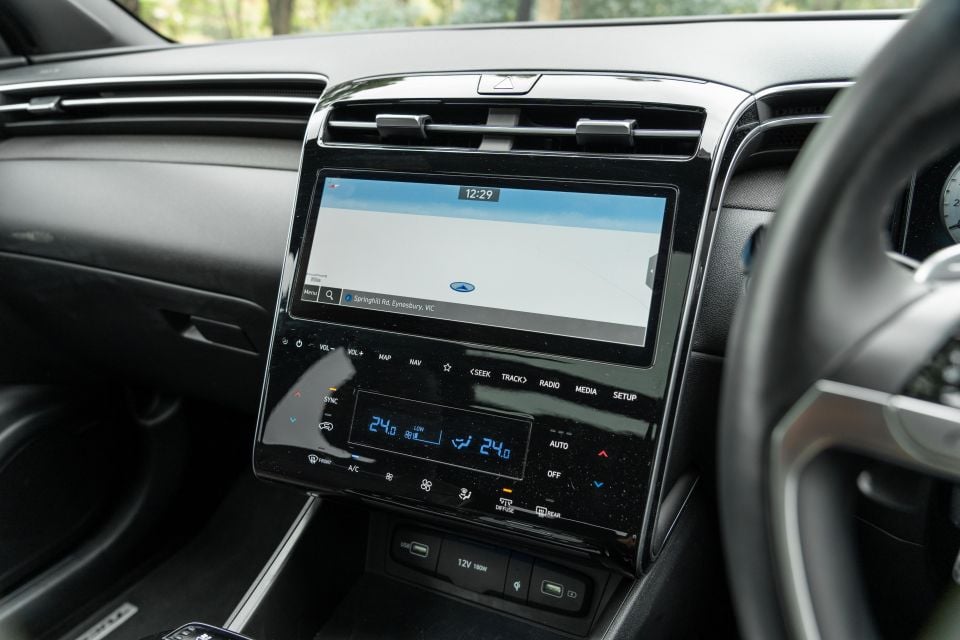
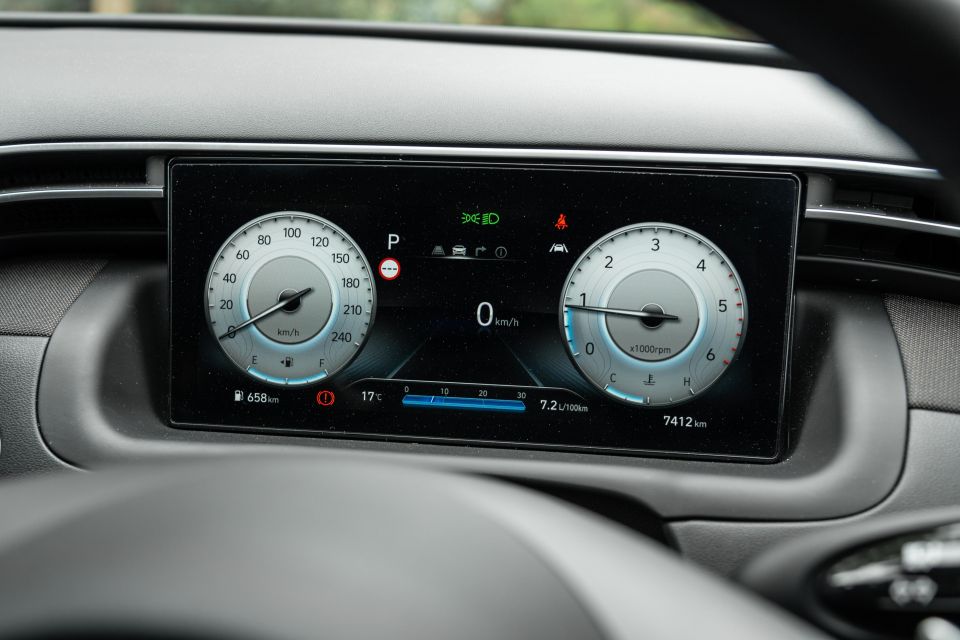
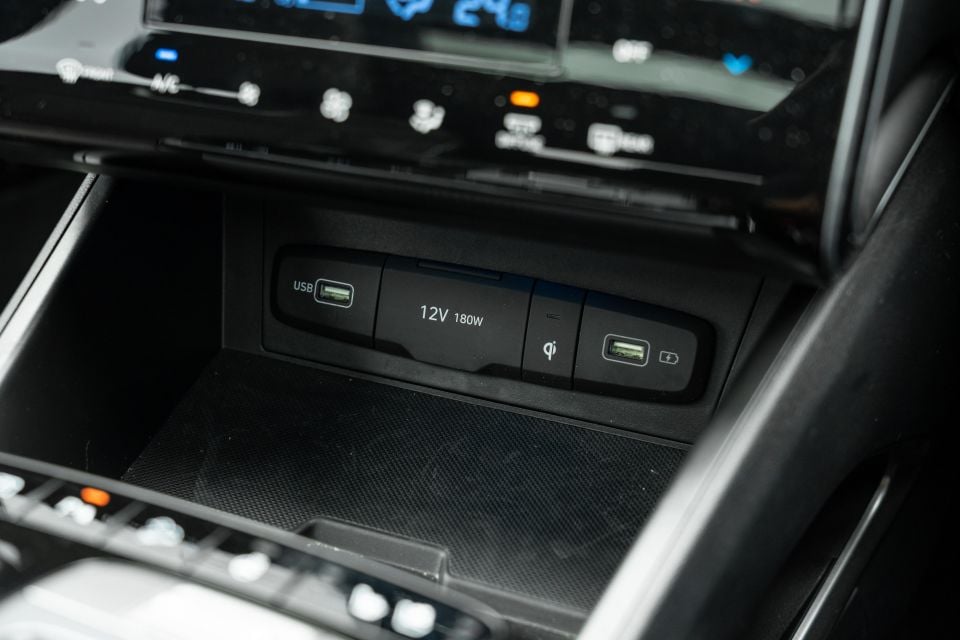
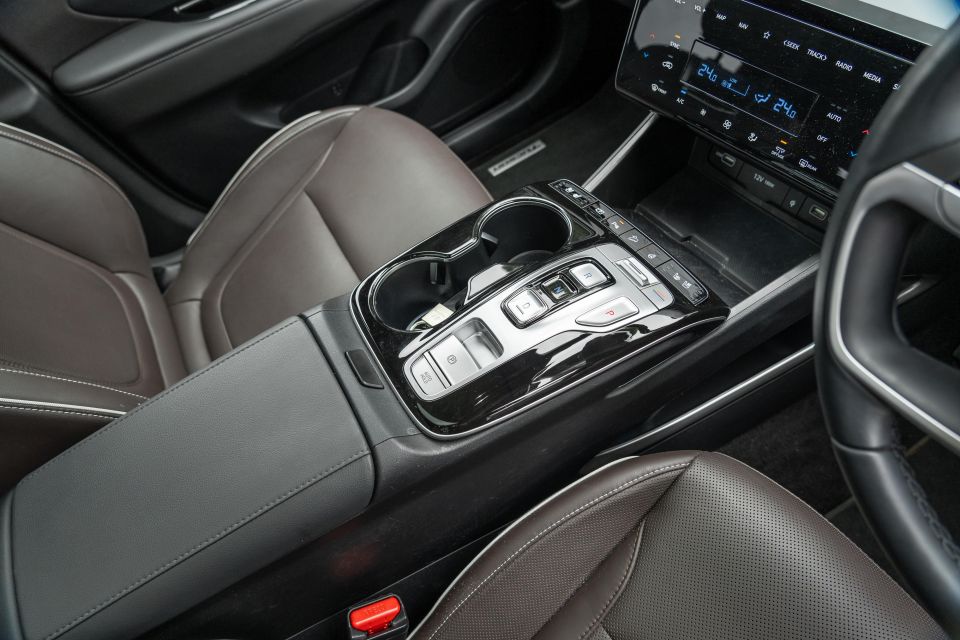
Don’t like gloss black trim? Look away now; everything you touch in the Tucson is covered with the fingerprint-prone finish. The touch capacitive buttons below the screen are easy enough to use, and they look great in marketing photos, but they instantly get dirty in real life.
The Sportage, with its matte-finished strip of touch buttons below the touchscreen, takes the smarter (and neater) route to achieving a clean-looking dashboard.
There’s acres of storage in both these cars. The Tucson has big cupholders, a large space at the base of the dashboard, a deep central box, and door bins with more than enough space for a large water bottle up front.
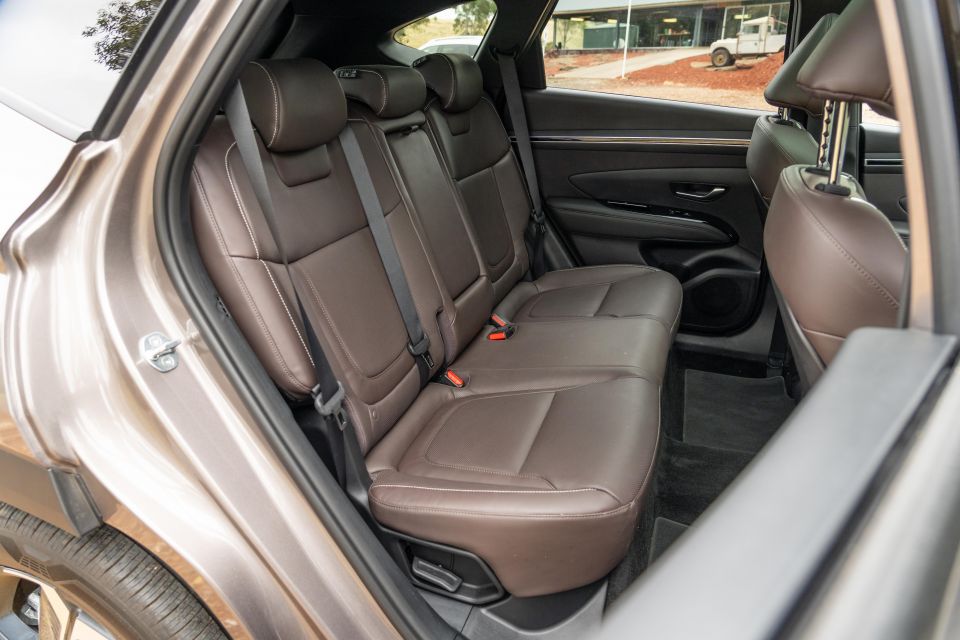

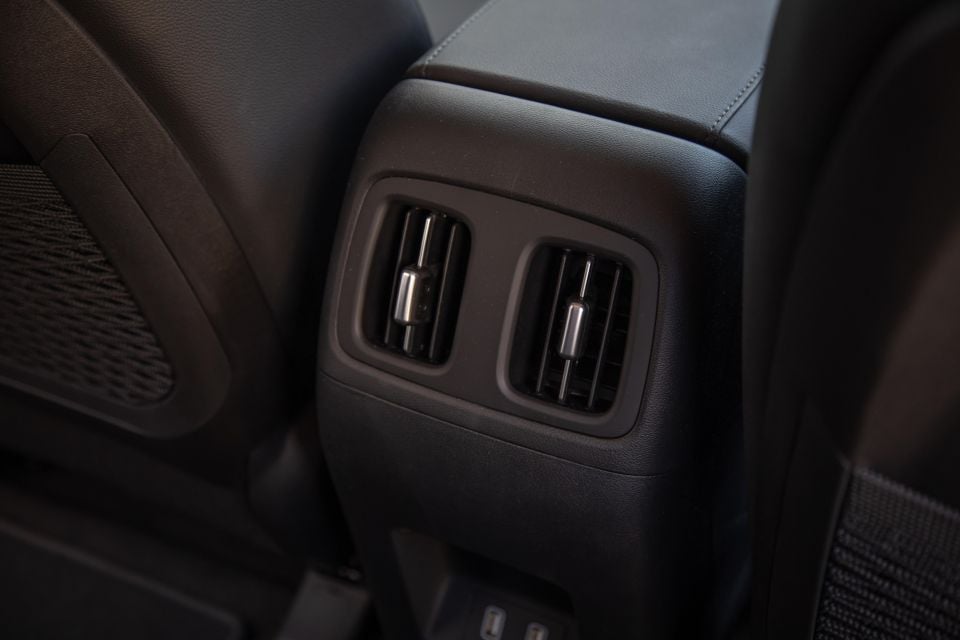

Hyundai gives you two USB-A ports up front to accompany the wireless phone charger, rather than faster and newer USB-C plugs.
With a longer body and significantly longer wheelbase than before, the new Tucson is a much better place for rear-seat passengers than before. Legroom is excellent, even for full-sized adults sitting behind full-sized adults, and the panoramic sunroof doesn’t nuke headroom.
There’s a fold-down central armrest with cupholders, along with rear vents, two rear USB ports, and a 12V outlet at the base of the transmission tunnel. The buttons for the heated rear seats are on the door.
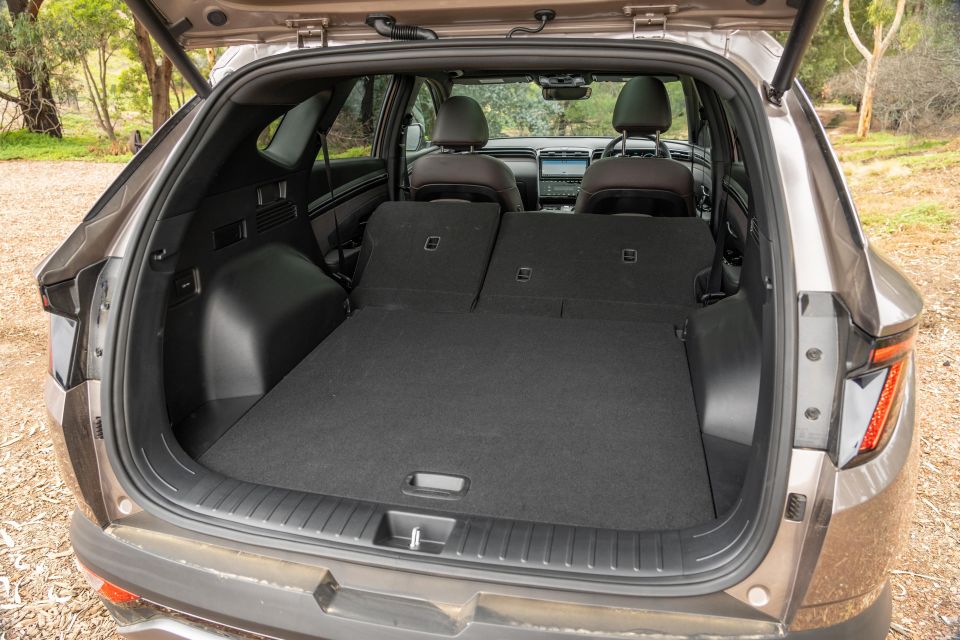

Boot space is a claimed 539 litres with the rear seats in place, expanding to 1860L with them folded. It’s a broad, practical place to store your stuff, with a wide-opening powered tailgate, 12V outlet, and remote releases for the rear seats.
Beneath the floor is a full-sized spare wheel.
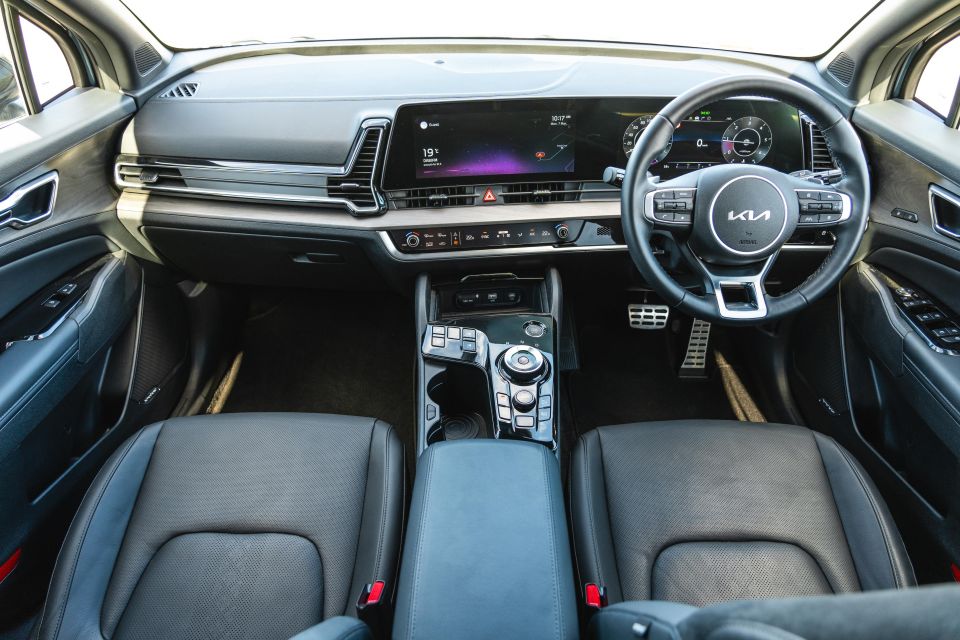
Kia Sportage
There are plenty of similarities between the Tucson and Sportage when you dig down into the details, but they both have distinct characters when you look at them.
The Sportage, with its dual 12.3-inch displays and wing-shaped dashboard, makes a more immediate impact than its cousin when you get behind the wheel. It’s a really handsome design, and shares plenty with the flagship EV6.
As is the case in the Hyundai, the Sportage features an excellent driving position. The suede and leather-trimmed seats offer plenty of support, and there’s enough adjustment to accomodate tall or short drivers, although the Kia steering wheel isn’t quite as nice as the Hyundai unit.
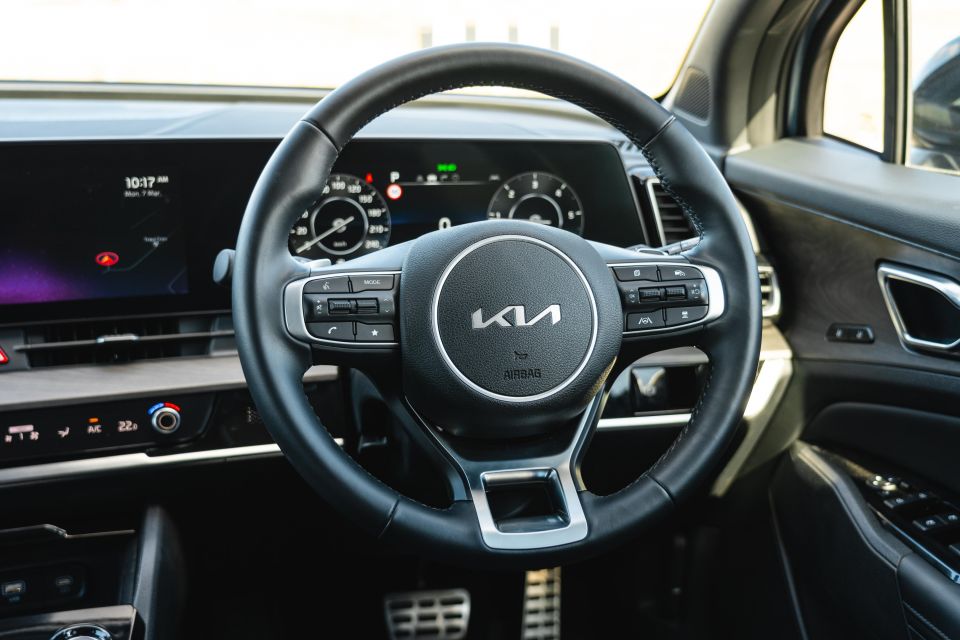
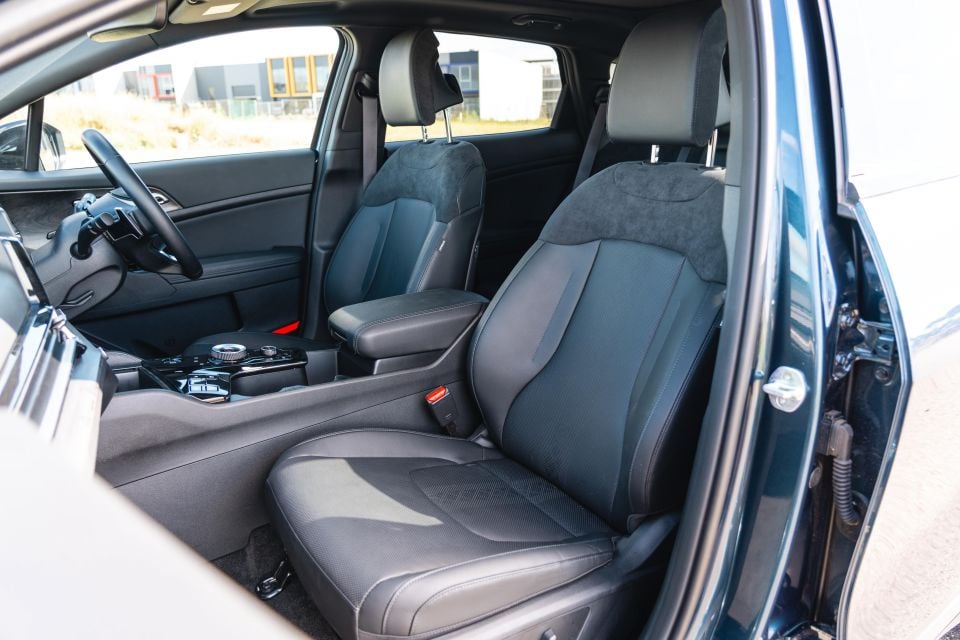
All-round vision is good – both these cars have very similar window lines, and both are almost exactly the same size – but once again the blind-spot camera and alert come in handy, given the upswept c-pillar.
The curved dual-screen infotainment screens in the Kia look more interesting and upmarket than the setup in the Hyundai, and the displays themselves are bigger. Although the base software is identical in both, the neon purple on black colour scheme of the Sportage’s infotainment system is more attractive to my eyes than the Tucson’s design.
Sitting below the widescreen infotainment system is a slim, matte touchscreen featuring a row of function buttons capable of controlling either the air-conditioning or the infotainment system.

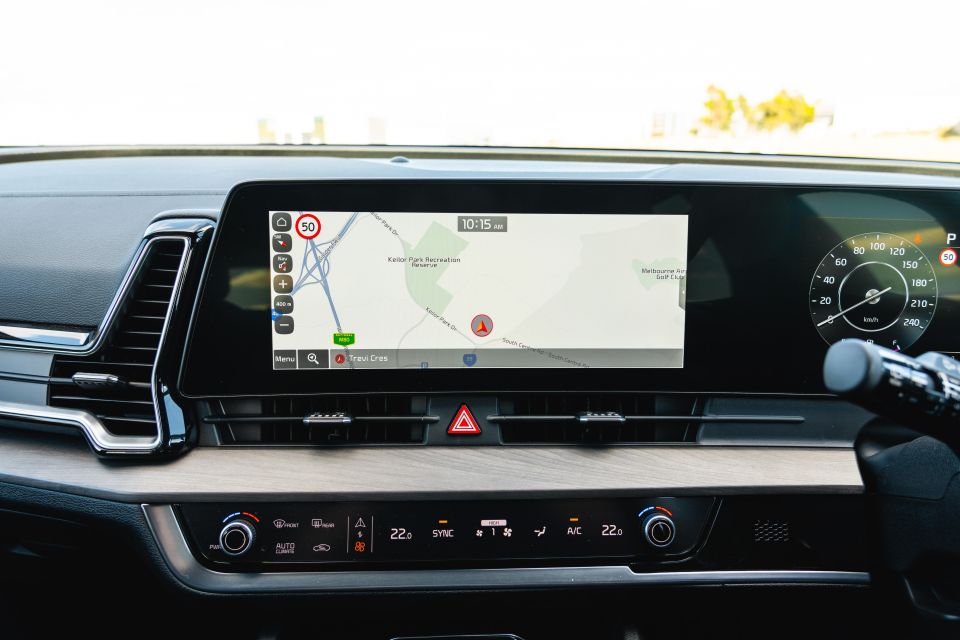
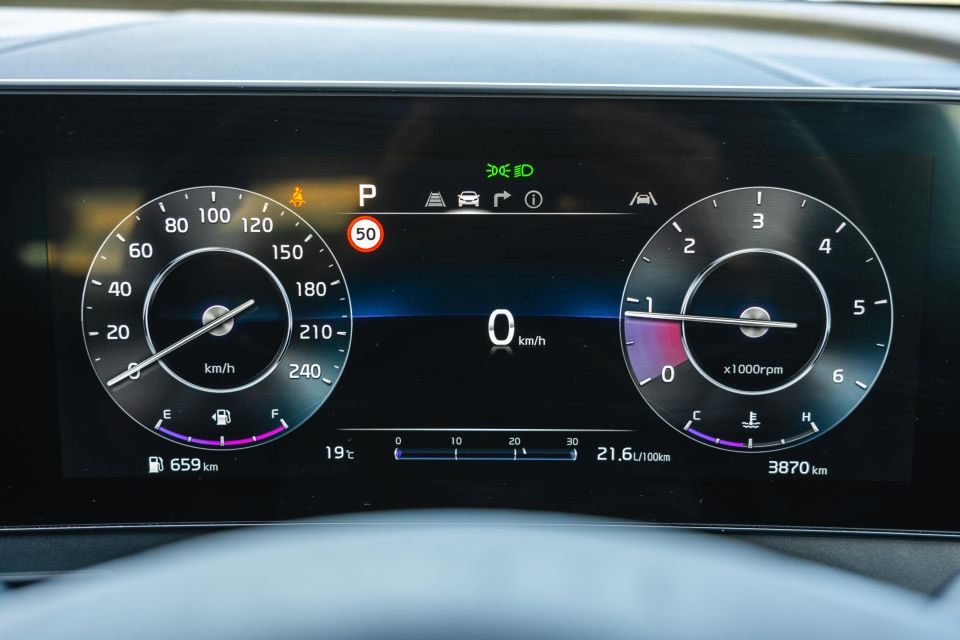
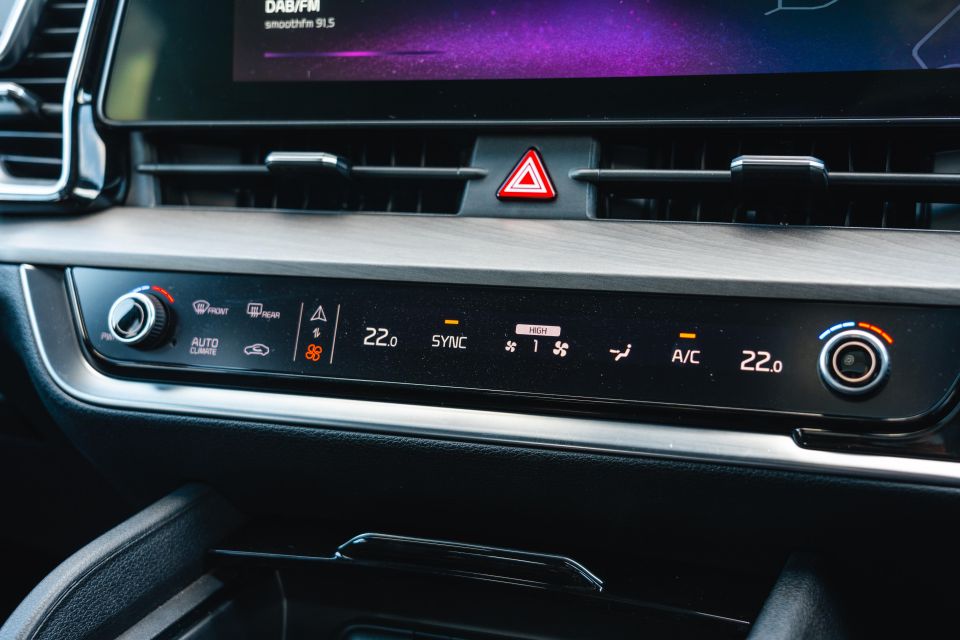
It’s a clever design that’s neater than the cascading stack of touch buttons on the Tucson, and has also allowed the design team to make the cabin look clean and simple. Here’s hoping the rest of the market takes note.
There’s an abundance of storage spaces around the cabin, with two cupholders, a decent space under the dashboard, a deep central bin, and door bins with space for large water bottles.
Kia has opted for a combination of USB-A and USB-C plugs up front, along with the standard wireless charger.
Like the Tucson, the Sportage has acres of space in the rear. Full-sized adults will be able to sit behind full-sized adults, and headroom is much better than you’d expect of a car with a full-length panoramic sunroof.
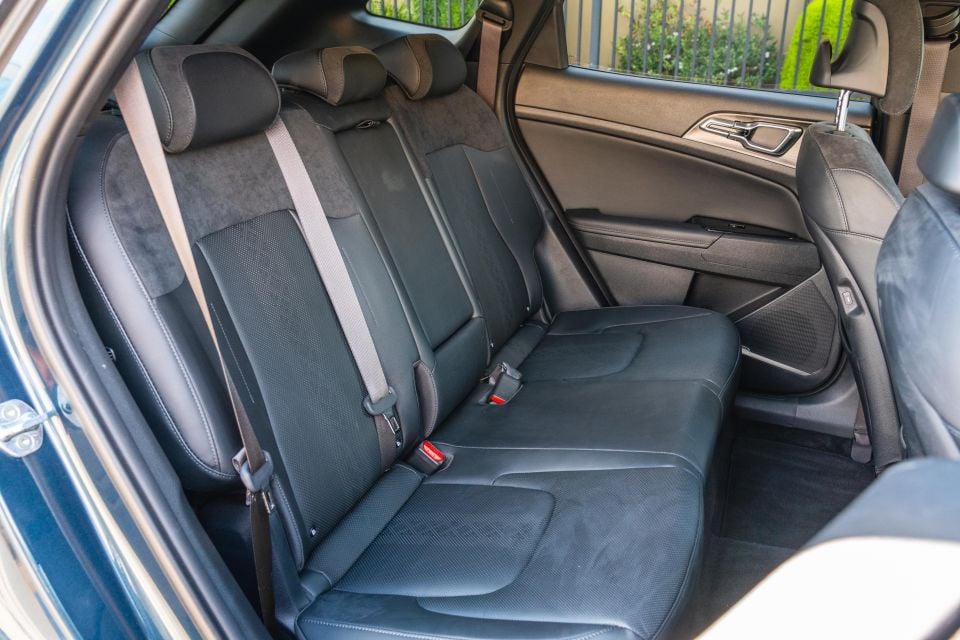
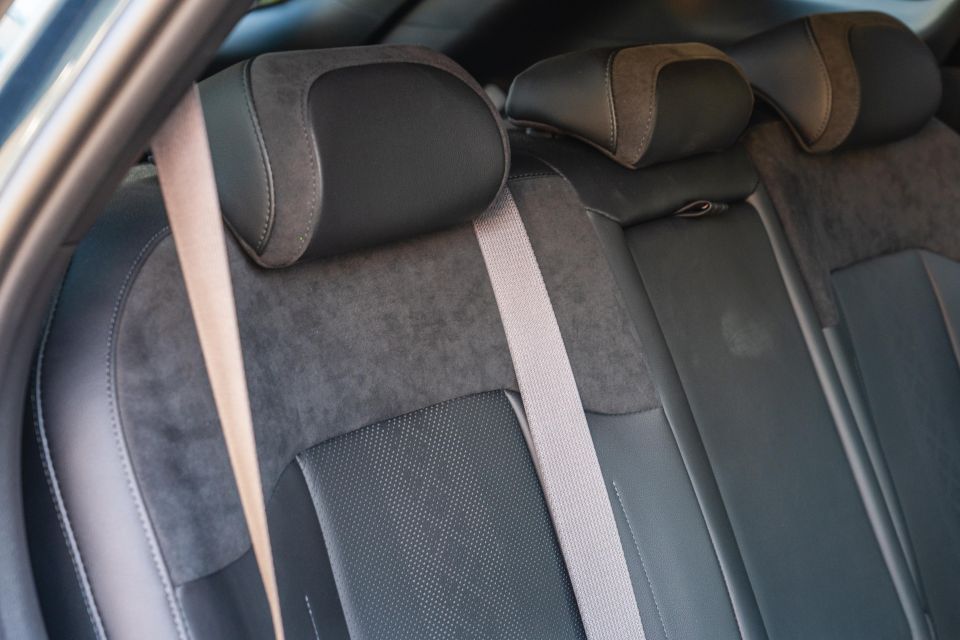
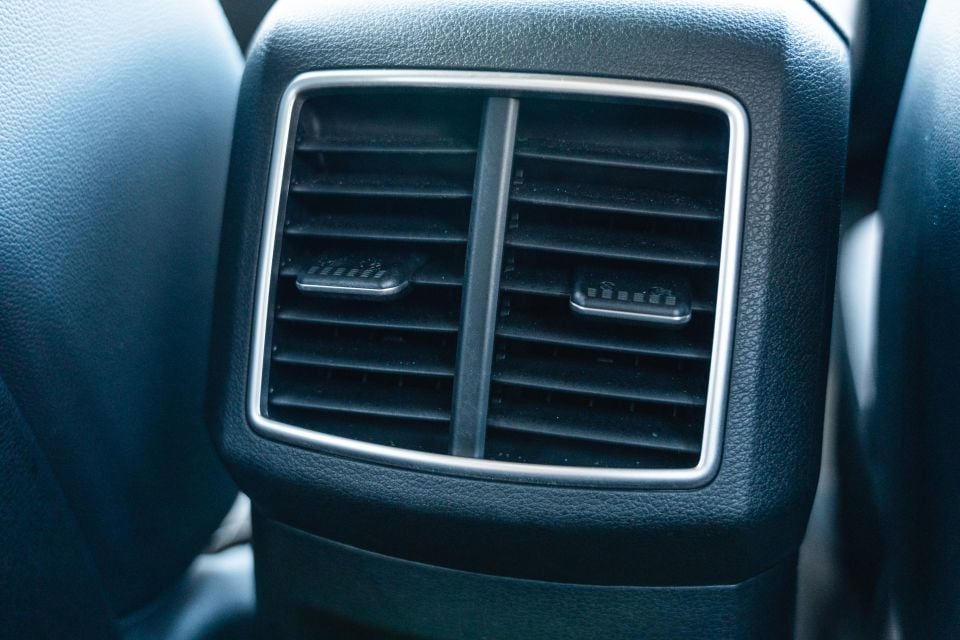
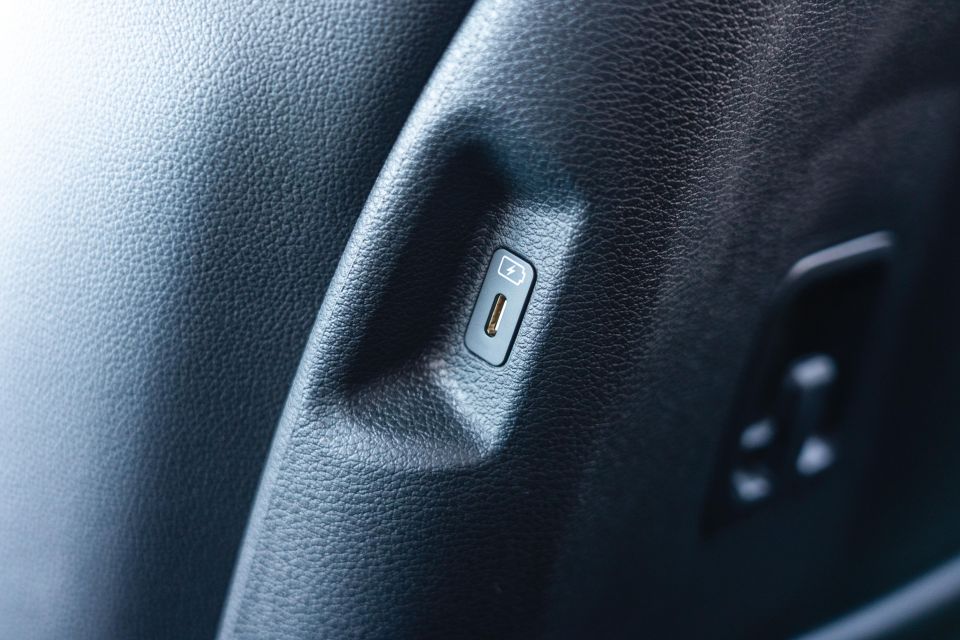
There’s a fold-down central armrest with cupholders, along with rear vents, two rear USB-C ports, and a 12V outlet at the base of the transmission tunnel. You don’t get heated rear seats in the Sportage.
Boot space is a claimed 543 litres with the rear seats in place, expanding to 1829L with them folded.
It’s a broad, practical place to store your stuff, with a wide-opening powered tailgate, 12V outlet, and remote releases for the rear seats.
Beneath the floor is a full-sized spare wheel.
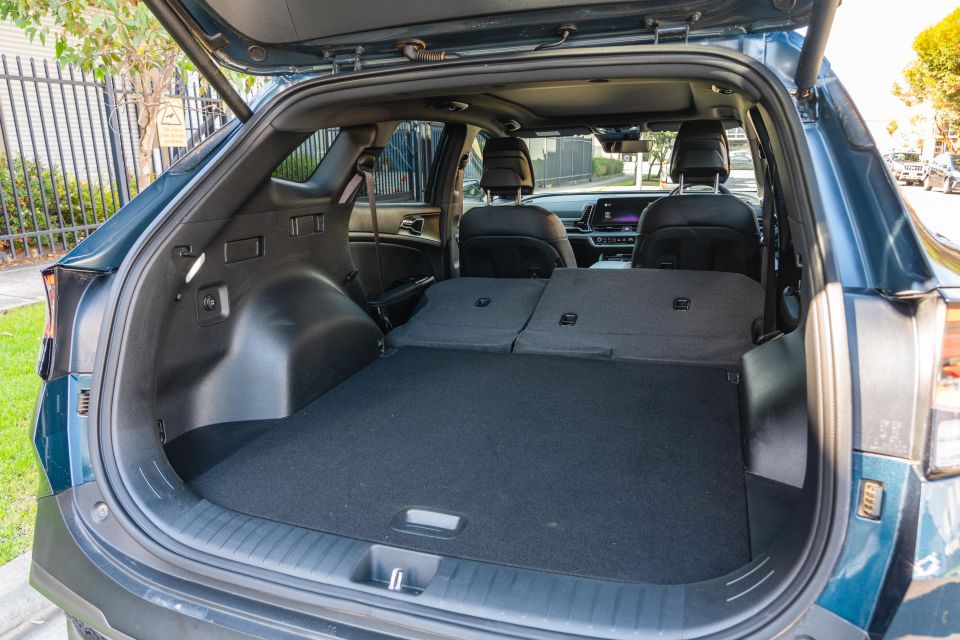
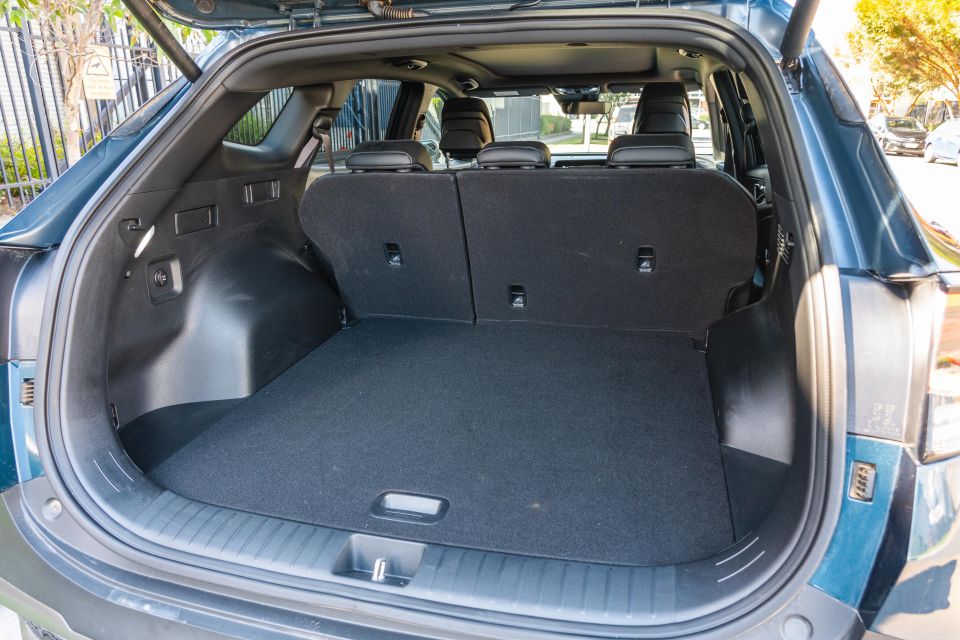
Where expert car reviews meet expert car buying – CarExpert gives you trusted advice, personalised service and real savings on your next new car.
| Hyundai Tucson | Kia Sportage | |
|---|---|---|
| Length | 4630mm | 4660mm |
| Width | 1865mm | 1865mm |
| Height | 1665mm | 1660mm |
| Wheelbase | 2755mm | 2755mm |
| Boot space (seats up/down) | 539L/1860L | 543L/1829L |
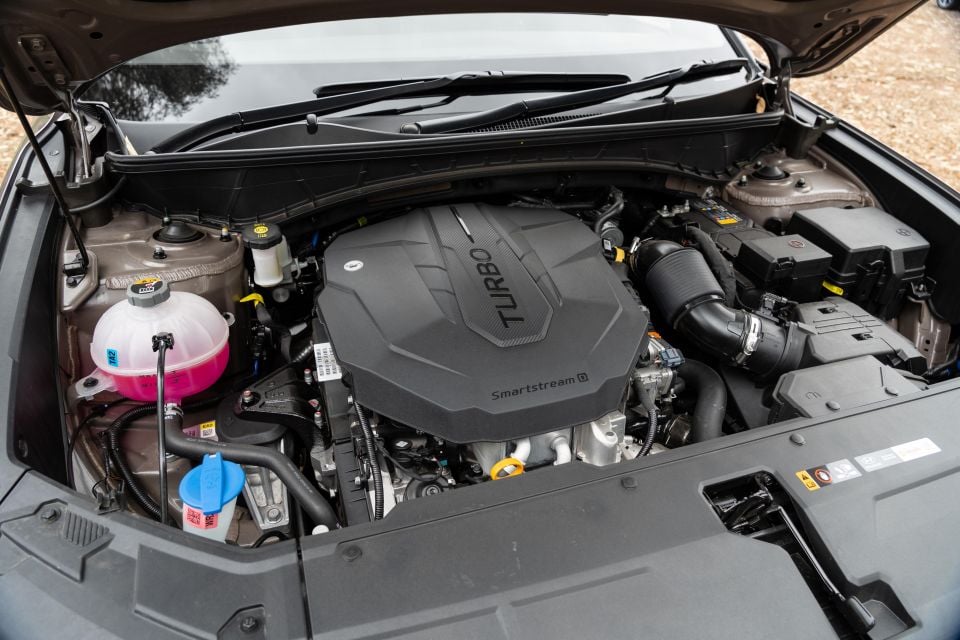
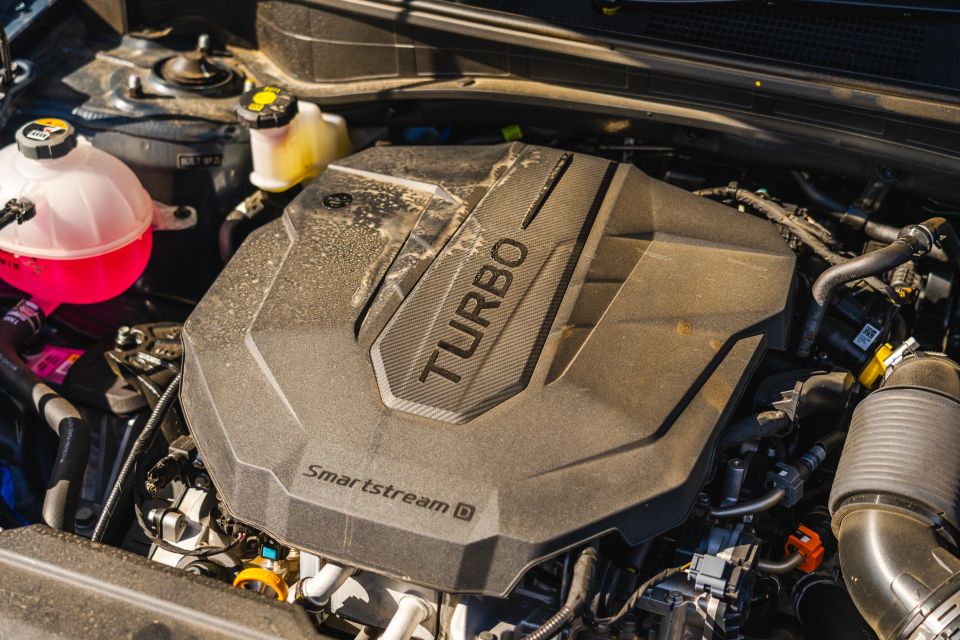
Both these cars are powered by the same engine. It’s a four-cylinder, 2.0-litre turbodiesel making 137kW of power and 416Nm of torque.
Both feature on-demand all-wheel drive systems, which send power to the front wheels until slip is detected, and both have a claimed fuel economy figure of 6.3 litres per 100km on the combined cycle. Both fuel tanks measure 54 litres.
We took both cars on a mixed highway, city, and rural road loop and saw fuel economy of 7.1 litres per 100km in the Hyundai, and 6.5 litres per 100km in the Kia. Although the loop was the same, traffic conditions weren’t identical.
In practice, both these cars will return very similar economy in the real world.
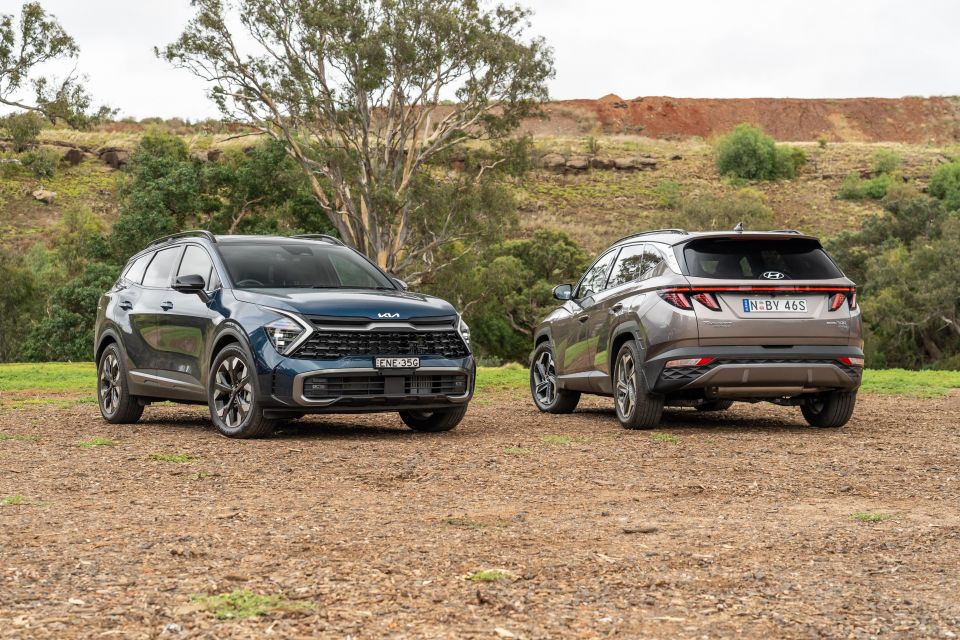
Usually we split the driving sections in these comparisons, but the Tucson and Sportage are so similar we’re bundling them together. They’re not identical, but the engines in particular are nigh-on impossible to split.
Poke the starter button (on the transmission tunnel in the Kia, on the dashboard in the Tucson) and they fire quickly, and settle into a smooth idle. There’s very little clatter or vibration at idle, and even when you put your foot down it stays quiet until you’re right up around the redline.
Of the three engines on offer in the Tucson and Sportage ranges, this is comfortably the best. Thanks to its torque converter automatic transmission and plentiful low-down torque, it gets off the mark smoothly and offers more than enough shove for the cut-and-thrust of city traffic.
Like all good turbodiesel engines, it has a relaxed, effortless feeling unless you really stretch it towards redline, which is nicely in keeping with the more mature, luxurious character of both these cars.
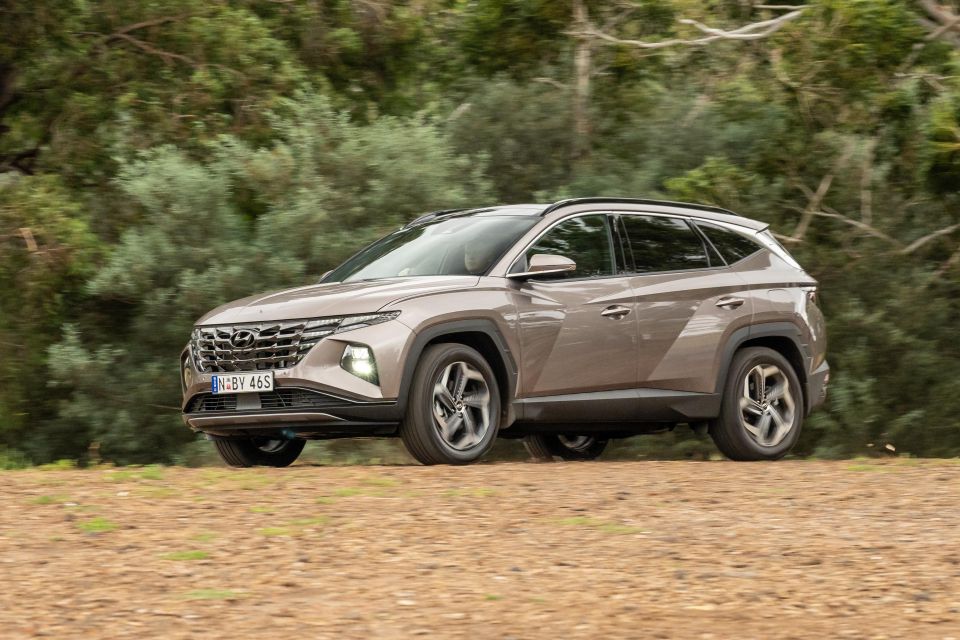
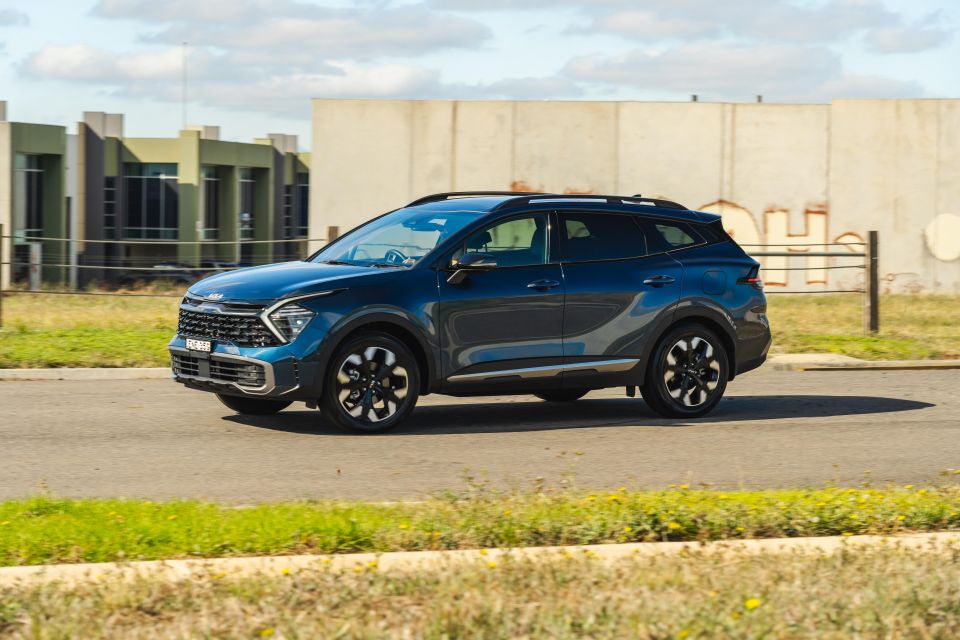
They’re nearly impossible to split when it comes to refinement. Both are impressively quiet at low speeds, with hardly any engine noise sneaking into the cabin, and both do an admirable job keeping wind and road noise out when you’re cruising at the legal limit.
What’s different, then? Well, there are some differences in the suspension tune.
Kia Australia has fiddled with the Sportage setup; Hyundai Australia hasn’t opted for a unique tune on the Tucson.
In the real world, that plays out subtly. We tested the Tucson and Sportage on the roads around Werribee; a mix of country highways, semi-sealed roads with a pronounced crown, and nasty washboard gravel.
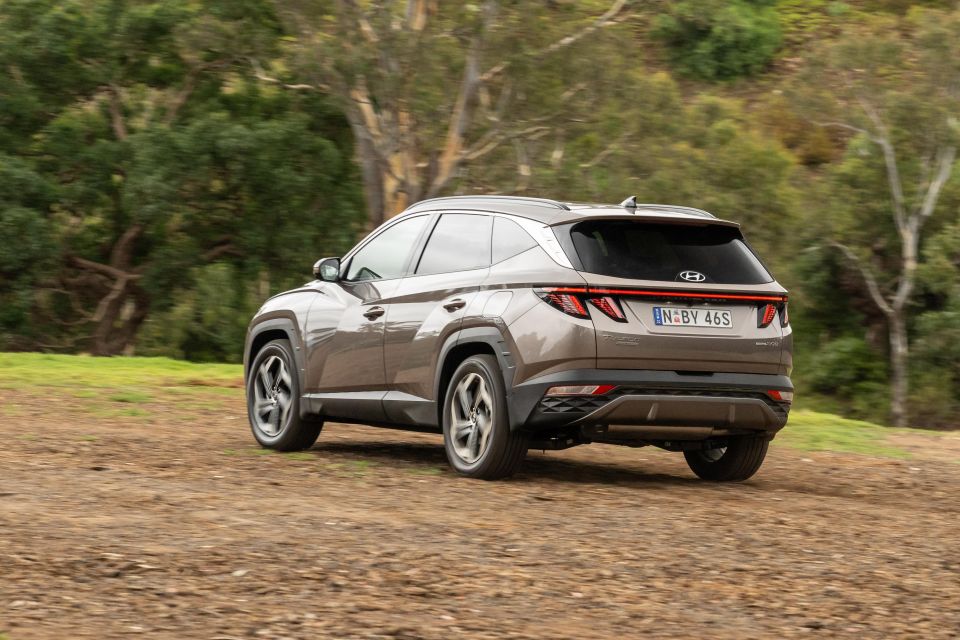
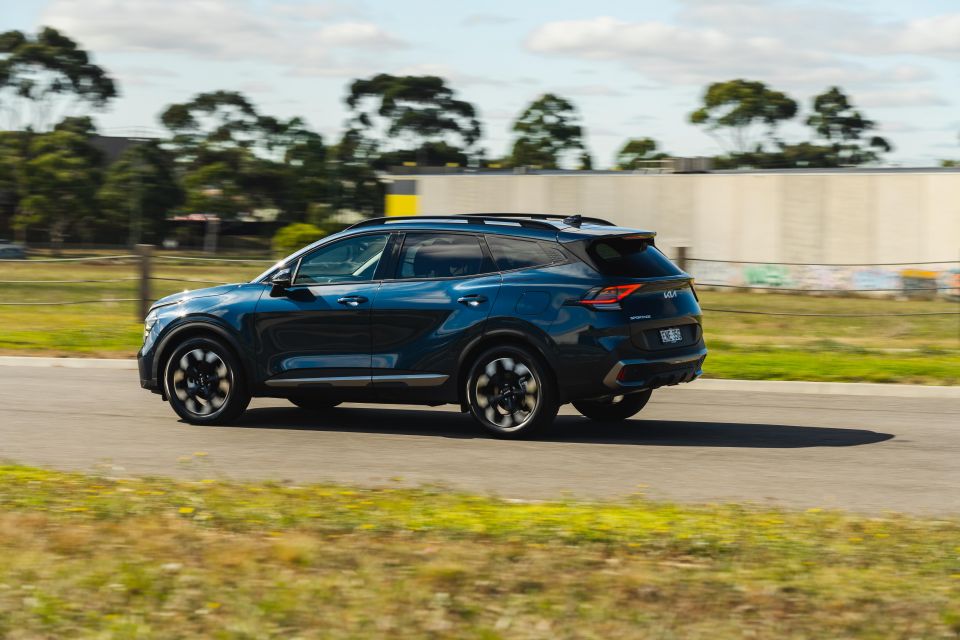
Both strike an excellent balance between ride comfort and handling, but the Sportage has a slightly more relaxed tune that does a better job soaking up the worst rural roads can throw at it. The driver is kept slightly better insulated from pimply road surfaces, but it hasn’t come at the cost of body control.
High-speed crests and dips are still handled in one neat movement, there’s no awkward bobbing or heaving, despite the slightly more compliant tune. It’s impressive.
The trade-off is that the Hyundai feels a bit sportier, although once again we’re talking about small margins. It’s a bit more tied-down, with tighter body control than the Kia. It doesn’t really put the sport in sports utility vehicle, but the Tucson is the sportier of the two cars on test here.
Both these cars feature the same lane-keeping and lane-centring assist systems. The former pushes back to the centre of the lane if you drift onto the white lines, the latter is more hands-on and will actively follow curves in the road.
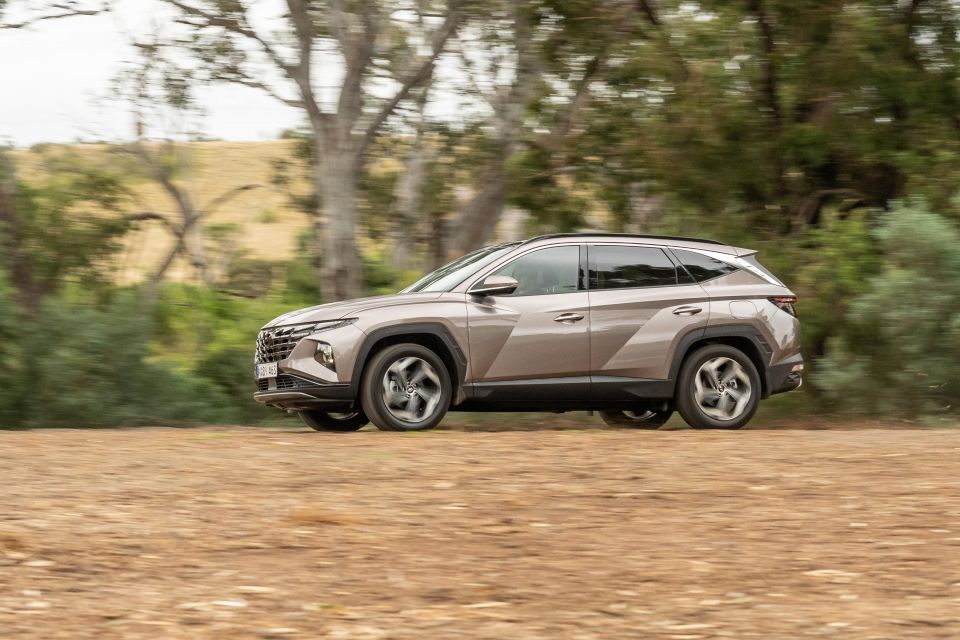

The lane-keeping system is handy, especially if you’re spending long periods of time on the highway, but the lane-centring is far too intrusive for my taste. Some members of the CarExpert team love the system, others instantly reach for the button to switch it off.
Although lane-keeping defaults to on, the lane-centring stays off once you’ve toggled it using the steering-wheel mounted button. Good.
| Hyundai Tucson | Kia Sportage | |
|---|---|---|
| Weight | 1773kg | 1759kg |
| Front suspension | MacPherson strut | MacPherson strut |
| Rear suspension | Multi-link | Multi-link |
| Front brakes | Ventilated disc | Ventilated disc |
| Rear brakes | Solid disc | Solid disc |
| Ground clearance | 181mm | 181mm |
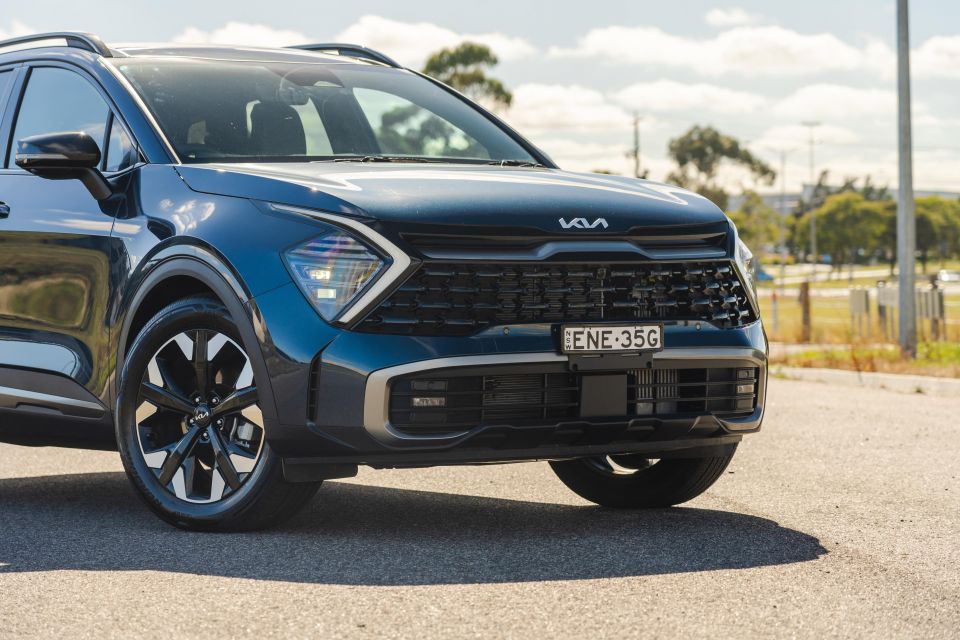
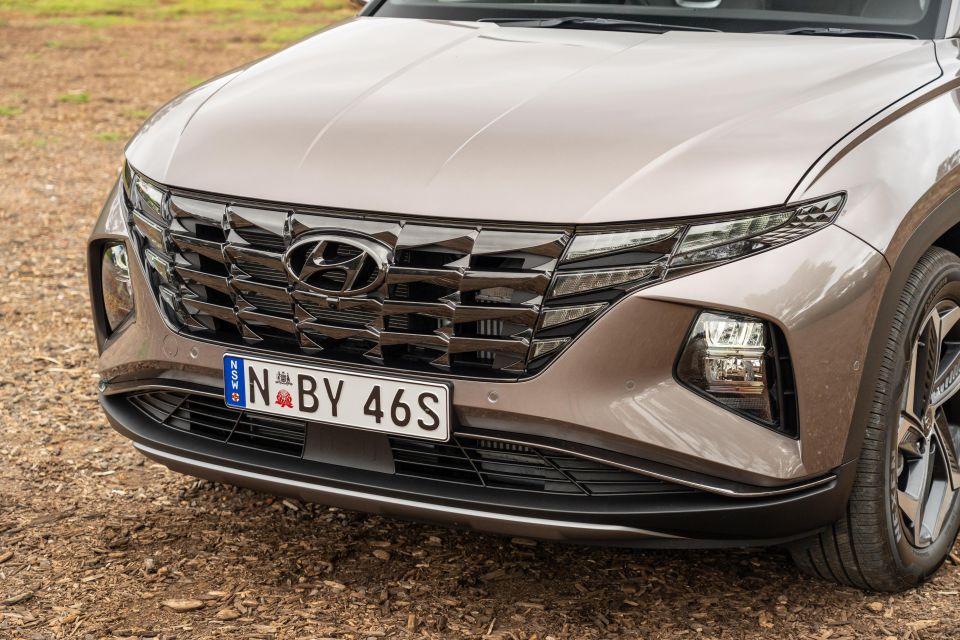
Despite their mechanical similarities, these cars are backed by different warranties and feature different service prices.
Hyundai Tucson
Hyundai backs the Tucson with a five-year, unlimited-kilometre warranty.
Five years of maintenance will cost you $1875 using the brand’s capped-price service program.
Kia Sportage
Kia offers an industry-leading seven-year, unlimited-kilometre warranty.
Five years of maintenance will cost $2481 using the brand’s capped-price service program. It’s disappointing the Sportage is more expensive than the Tucson to maintain, although the difference doesn’t completely erode the savings you’ll make at purchase by opting for the Kia.
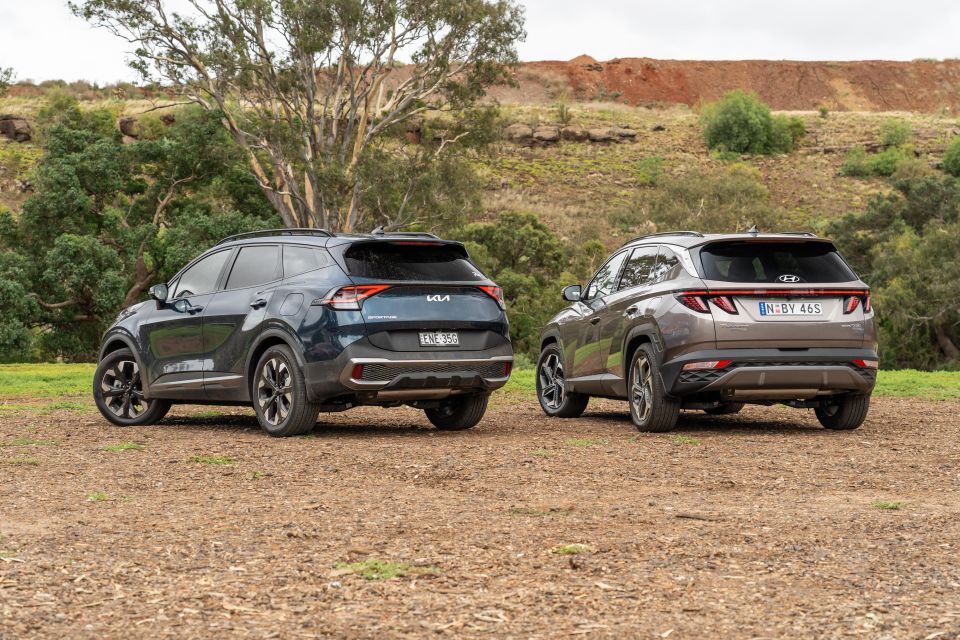
The similarities between these cars makes this a very easy, but also a very difficult, comparison to conclude.
You can’t really go wrong with the Hyundai or the Kia. They share a refined, torquey diesel engine, and both offer acres of space in their more luxurious, high-tech interiors. Sure, they’re more expensive than their predecessors, but they’re also much more grown up.
The hard part is picking a winner, but we’ve managed to do just that.
The Sportage wins this comparison thanks to its national drive-away pricing, and the slightly more resolved interior.
I think the Hyundai is better looking on the outside, and the range of interior finishes and the N Line package mean you can make it your own in a way you can’t with the Kia. It’s also a very good mid-sized SUV, but it’s slightly shaded by its cheaper brother.
MORE: Everything Hyundai Tucson MORE: Everything Kia Sportage
Share your thoughts with us in the comments below!
Scott Collie is an automotive journalist based in Melbourne, Australia. Scott studied journalism at RMIT University and, after a lifelong obsession with everything automotive, started covering the car industry shortly afterwards. He has a passion for travel, and is an avid Melbourne Demons supporter.
Share your thoughts and write a review of a car you own and get featured on CarExpert.


William Stopford
5 Hours Ago


Max Davies
6 Hours Ago
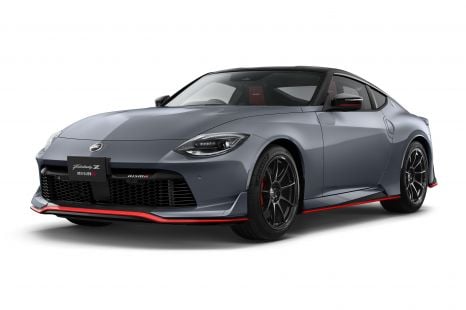

Derek Fung
7 Hours Ago
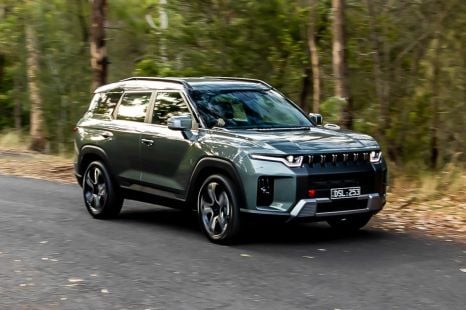

Matt Campbell
13 Hours Ago


Ben Zachariah
1 Day Ago


Damion Smy
1 Day Ago